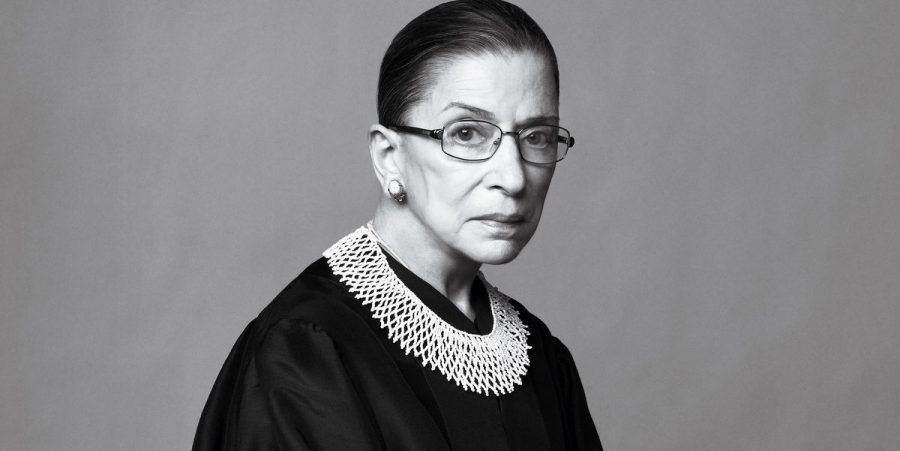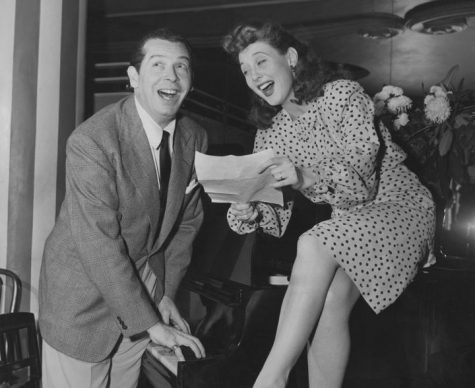My Grandfather’s Friend, Ruth Bader Ginsburg
January 19, 2021
On September 18th, 2020, Supreme Court Justice Ruth Bader Ginsburg passed. Her death followed a packed career full of substantial legal accomplishments and precedents set, and both her life and death impacts where justice may go in the future. In processing her death with family and friends I chose to consult someone whom I know has extensive knowledge of Ginsburg: my grandfather, Lyle Denniston, 89 years old, who was a Supreme Court journalist for 58 years.
Let it be known that while I’d known of my grandfather’s involvement with the Supreme Court, it did still come as a bit of shock to me when I learned that he and Ginsburg were friends. After seeing her presented as such an iconic figure in the news, especially following her passing, I wanted to hear my grandfather’s insight and get a much closer look at her life. I contacted him about discussing Ginsburg, to which he was delighted to participate in.
As a journalist, my grandfather knew Ginsburg on what could be referred to as a “close acquaintance” level. “I would say we were good friends, but of course, we were friends across a professional divide,” he explained. “She was on the court and I was a reporter, newspaper reporter covering the court. So to a degree, she had to keep her distance from me and I had to keep [my] distance from her.” He grew to know her, though, through parties and Supreme Court events that he and my grandmother attended, as well as the everyday interactions formed between the small number of Court employees. “It was always interesting because whenever she went to a social occasion, she always wore long white lace gloves,” he recalled fondly. “I don’t know whether or not it was a kind of a formality with her or whether or not she was kind of risk averse about touching other people. She was extremely shy in those kind[s] of social encounters.”
Yet, let there be no misunderstanding; Her formality never made her cold or uninteresting. “When you got her to [talk] to you, she was open and engaging. She laughs quite easily. She loves to tell family stories,” he said. “She was exceedingly smart. You knew that the minute you encountered her.” He went on to explain that her casual or more private personality was “much more voluble, much more open, much more friendly than her demeanor on the bench…She was all business and she was a very frequent questioner. It would not be uncommon that whenever a new case would come up for argument, Ruth would be one of the first to start asking questions.” He recalled the juxtaposition of her smaller stature and her powerful judicial presence, saying, “Oftentimes…you couldn’t see her except the top of her head because she would lean forward and almost down below the bench well…But she was a very active questioner and she was no pushover for some of the men on the court at all.”
Ginsburg, having served as a justice from 1993 up until her death, had an impressive track record in the courtroom. She “was really a pioneer in handling the question of equality for women and girls…She won a lot of her victories in the Supreme Court by arguing in favor of equality for men…The law was that women were to be kept apart from men. They were to be kept on a pedestal because they were considered fragile…What Ruth decided as a strategy was, well, if women do have specific rights, why don’t we argue in favor of equality for men so that we can establish the principle that gender applies equally to whatever your gender is? And it worked.” In one of her most notable cases, United States V. Virginia in 1996, Ginsburg “Won equality of admission to the Virginia Military Institute in Lexington, Virginia, for women cadets…Ruth made the argument that because graduates of VMI always did very well in careers both in the military and in business, that that was a special benefit that the VMI was allowing only to men. And so she argued in favor of including women in the student body.” Ruth also “argued in favor of allowing men to enter nursing school on an equal basis basis with women. So she was extremely clever as each of those cases shows, in fashioning a strategy that she knew would be a winning strategy.” Much of Ruth’s effectiveness, my grandfather pointed out, came from how she “adapted the same strategy that Thurgood Marshall did, which is, ‘don’t go for everything all at once.’ Try to win one case at a time.”






